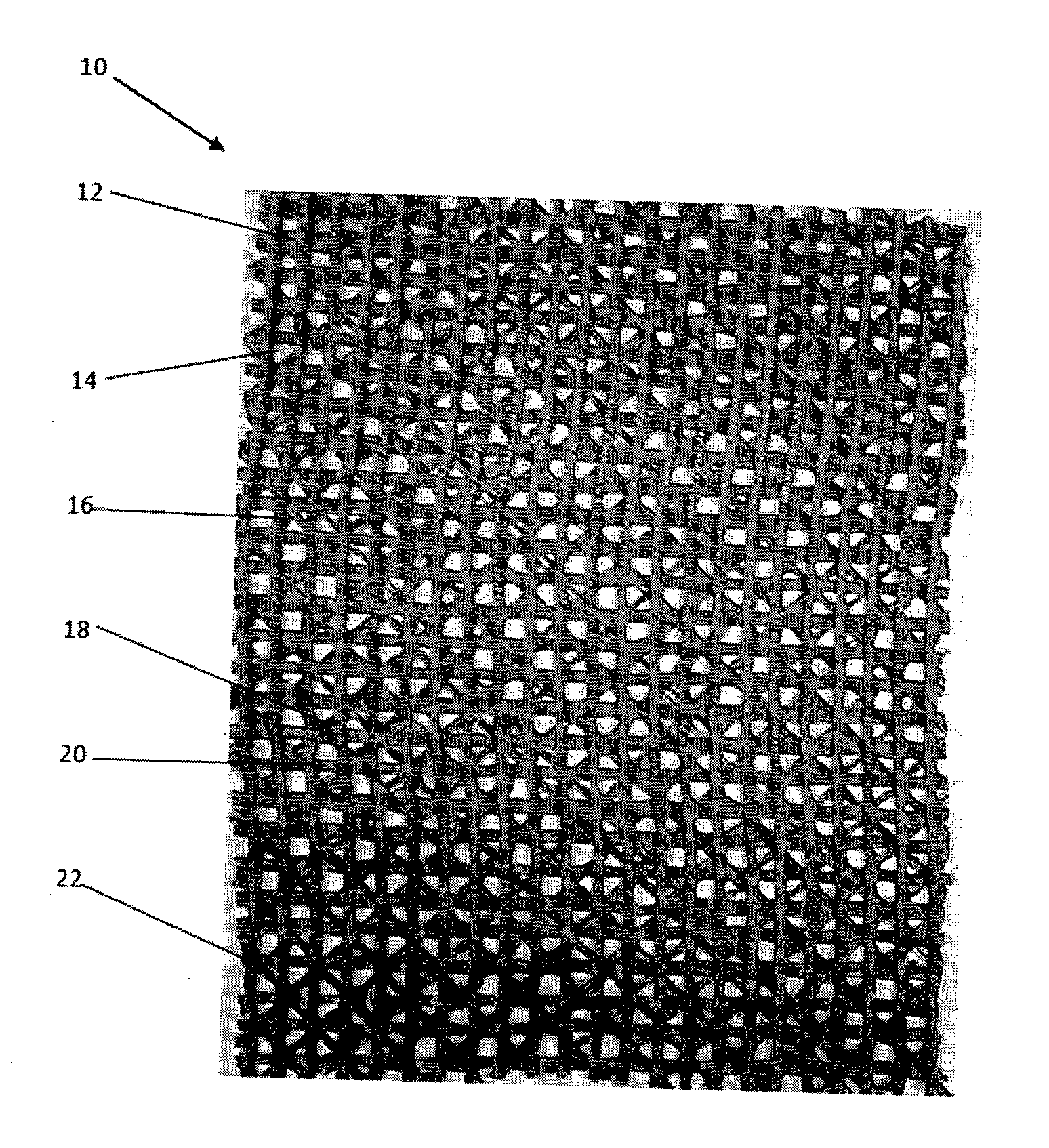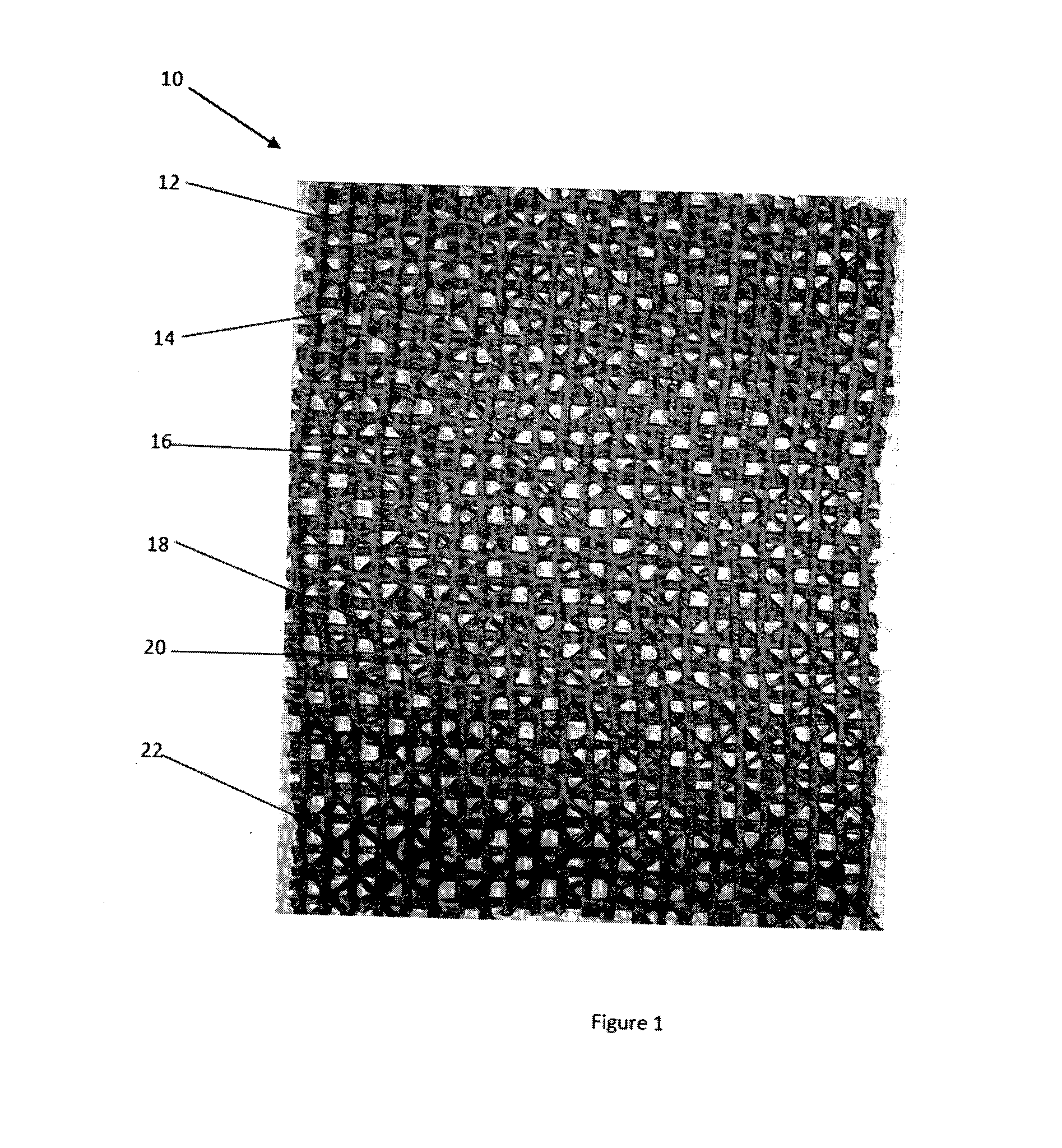Reinforced rubberised transport systems
a technology of reinforced rubber and transport system, which is applied in the direction of transportation and packaging, mechanical equipment, other domestic objects, etc., can solve the problems of limited impact resistance, energy cost, and difficulty in achieving good belt tracking ability, so as to reduce splicing failures, improve impact resistance, and improve splicing strength
- Summary
- Abstract
- Description
- Claims
- Application Information
AI Technical Summary
Benefits of technology
Problems solved by technology
Method used
Image
Examples
Embodiment Construction
[0023]Referring to FIG. 1, the construction of the multiaxial composite mesh like fabric 10 is clearly visible with the aramid yarn 12 in multiple directions to create the apertures 14 for rubber impregnation.
[0024]The layers of yarn of the quadriaxial fabric are preferably oriented at 0° (16), +45° (18), 90° (20) and −45° (22).
[0025]The apertures14 in the mesh between the various strands of yarn (16, 18, 20, and 22) are generally between 3 mm and 8 mm in size.
[0026]The multiaxial composite mesh like fabric 10 is treated with RFL to ensure that it bonds with rubber, after which rubber is vulcanised onto the carcass.
[0027]By changing the angles and directions of the aramid textile composite structure, many additional benefits are added to the “conventional” systems that are currently in use. The product displays the following attributes:[0028]Light weight high strength constructions[0029]Automatic tracking ability[0030]Improved impact resistance with textile reinforcing covering more...
PUM
| Property | Measurement | Unit |
|---|---|---|
| size | aaaaa | aaaaa |
| size | aaaaa | aaaaa |
| size | aaaaa | aaaaa |
Abstract
Description
Claims
Application Information
 Login to View More
Login to View More - R&D
- Intellectual Property
- Life Sciences
- Materials
- Tech Scout
- Unparalleled Data Quality
- Higher Quality Content
- 60% Fewer Hallucinations
Browse by: Latest US Patents, China's latest patents, Technical Efficacy Thesaurus, Application Domain, Technology Topic, Popular Technical Reports.
© 2025 PatSnap. All rights reserved.Legal|Privacy policy|Modern Slavery Act Transparency Statement|Sitemap|About US| Contact US: help@patsnap.com


